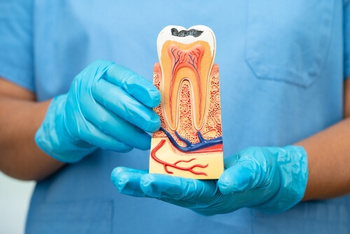
- Harris Dental Boutique
- dental filling cost factors, dental filling procedure, dental fillings
- General Dentistry
No one likes dealing with a damaged tooth, but getting it fixed early can save you from bigger problems later. Have you ever wondered why tooth filling costs vary so much? The price depends on a few things. While some may focus only on cost, it’s just as important to think about long-term benefits. Before deciding, it’s helpful to understand what affects the cost and how to find the right option for your smile.
What Is a Tooth Filling?
A tooth filling helps restore a natural tooth when part of it is damaged. It is placed inside the tooth structure to keep it strong and prevent further issues. Different materials can be used to match the look and function of real teeth. This simple solution helps keep your smile healthy and complete.
What Is the Cost of Getting a Tooth Filling?
In Australia, the cost of getting a tooth filled is affected by different factors, including the tooth’s location and material selection. A filling for a front tooth is usually priced at $168, while a back tooth filling costs about $177.
What Elements Influence the Price of a Tooth Filling?
Many factors can impact the cost of getting a filling, and understanding these can help when planning for treatment. The price can vary based on different aspects, such as the type of filling, the complexity of the dental procedure, and the materials used.

Type of Filling Material
The choice of filling material plays a key role in determining the overall cost. Some materials are more affordable, while others offer enhanced durability or a more natural appearance. Amalgam fillings are often one of the lower-cost options, as they have been used for many years and are known for their strength. Composite resin is more commonly used for front teeth due to its ability to blend with the natural shade of teeth. Porcelain fillings and gold fillings are premium choices that offer durability and aesthetic appeal but tend to come at a higher price.
Size and Complexity of the Filling
The dental filling cost is also influenced by the size of the cavity and how much of the tooth needs to be restored. A small cavity that requires minimal treatment will generally be less expensive than a large restoration that affects multiple surfaces of a tooth. If the decay is deep or extends beneath the gum line, the complexity of the treatment increases, which may add to the total price.
The Number of Tooth Fillings Needed
Patients requiring multiple tooth fillings in different areas of the mouth may notice higher costs compared to treating just a single cavity. Each filling requires careful preparation, shaping, and bonding to the affected tooth, and the time required for the dentist to complete the work can add to the overall treatment cost.
The Location of the Affected Tooth
The position of the affected tooth can also affect the price of the treatment. Fillings in molars, which endure greater chewing forces, may need stronger materials like gold fillings or high-strength composite fillings, which can influence the total filling costs. Additionally, back teeth are harder to access, sometimes requiring more time and effort to complete the procedure.
The Type of Dental Clinic
Different clinics may have varying pricing structures based on the level of care and technology they offer. Some clinics provide advanced techniques and modern equipment, which may reflect in the tooth filling cost. Techniques such as laser-assisted cavity removal, digital imaging, and high-quality materials may contribute to a higher dental procedure cost but can improve the precision and longevity of the treatment. A clinic that focuses on cosmetic treatments may charge more for aesthetic restorations compared to a general dental practice.
The Dentist’s Experience and Training
The skill and experience of the dentist performing the procedure can also affect dental filling pricing. A highly experienced dentist who excels in cosmetic or restorative dentistry may charge higher fees than a general practitioner. However, this experience can also ensure that the treatment is performed efficiently and provides long-lasting results.
Private Health Insurance and Health Fund Coverage
A health fund may offer partial or full coverage for fillings depending on the level of coverage a patient holds. Some private health insurance plans provide benefits for basic restorative treatments, which can reduce out-of-pocket expenses. However, policies vary, so checking with the insurance plan beforehand is essential.
The Need for Additional Treatments
Some fillings require additional work, such as removing old restorations, reinforcing the tooth, or reshaping the surface to restore function. If multiple procedures are required, the dental filling cost may be higher due to the extra time and materials involved.
The total tooth filling cost depends on many factors, including the type of filling material, the complexity of the procedure, and the location of the affected tooth. The expertise of the dentist, the technology used, and whether private health insurance covers part of the treatment can also influence the price. Understanding these elements helps patients make informed choices when considering their dental care needs.
How Is a Tooth Filling Procedure Performed?
Understanding each step of the tooth filling process can help make the experience smoother and more comfortable.
Examining the Tooth
Before starting the tooth filling dental procedure, the dentist carefully checks the affected area. A thorough examination helps determine how much of the tooth is damaged and if a filling is the right option. In some cases, an X-ray may be taken to assess the depth of the decay and check for any underlying concerns.
Numbing the Area
To ensure a stress-free experience, the dentist applies a numbing agent to the gum near the affected tooth. Once the area is numb, the next step can begin. This allows the procedure to be completed comfortably without any unnecessary sensitivity.
Removing the Decay
The next stage in the process involves clearing out the decayed part of the tooth. A dental drill is carefully used to remove the damaged section while preserving as much of the healthy tooth structure as possible. This step is important to prevent further damage and ensure a strong foundation for the filling.
Cleaning and Preparing the Space
Once the decayed part is removed, the dentist cleans the area to get rid of any debris or bacteria. A clean surface helps the filling bond securely and reduces the risk of further decay developing under the new material. If the cavity is deep, a protective base may be applied before placing the filling to provide extra support.
Placing the Filling
After the space is properly prepared, the dentist begins placing the filling material. The tooth filling typically involves using materials such as composite resin, amalgam, or porcelain, depending on the location of the tooth and patient preference. The material is carefully shaped to match the natural tooth’s form and ensure a proper bite.
Hardening the Filling
For fillings that require bonding, a special light may be used to harden the material. This helps strengthen the filling and ensures it stays securely in place. The dentist applies the material in layers, hardening each one before adding the next, which allows for a strong and natural-looking result.
Shaping and Smoothing
Once the filling has set, the dentist carefully adjusts its shape to match the natural contours of the tooth. Any extra material is removed, and the surface is polished to create a smooth finish. This step ensures the filling blends well with the rest of the tooth and does not interfere with normal chewing.
Checking the Bite
To make sure the filling sits comfortably, the dentist asks the patient to bite down gently. Any high spots or rough edges are adjusted to ensure the bite feels natural. If needed, additional minor refinements are made to prevent any discomfort when eating or speaking.
Final Inspection
The last step of the process is a final check to ensure the filling is secure and properly aligned. The dentist makes sure the tooth is fully restored and that the patient feels comfortable with the result. With the filling in place, the tooth is now ready to function as normal.
A tooth filling is a step-by-step process that restores a tooth after decay is removed. From numbing the area to shaping the final result, each step is done with precision to ensure a comfortable and long-lasting restoration.
What Benefits Come with Getting a Tooth Filling?

Stops Decay from Spreading
A filling helps protect the tooth by sealing the damaged area and preventing further decay. If left untreated, decay can spread deeper into the tooth, leading to more serious problems. By addressing the issue early, a filling helps keep the surrounding structure intact and avoids the need for more extensive treatments later.
Restores the Strength of the Tooth
When a tooth is affected by decay or minor fractures, it may not be as strong as before. A filling helps restore its strength, allowing it to handle daily functions like chewing and speaking. With the right material and placement, a filled tooth can work just as well as a natural one.
Prevents Further Damage
A weakened tooth is more likely to break or wear down over time. A filling adds a layer of protection, reducing the risk of cracks or chips. It also ensures that the affected tooth remains stable and does not become more damaged from normal use.
Provides a Long-Lasting Solution
With proper care, a filling can last for many years. The materials used in modern dentistry are designed to be durable and reliable, helping maintain the tooth’s function. Regular check-ups allow the dentist to monitor the condition of the filling and make sure it stays in good shape.
Maintains a Natural Appearance
Advancements in dentistry have made it possible to choose fillings that match the colour of natural teeth. This makes them blend in seamlessly, so the restoration is not noticeable when smiling or speaking. For front teeth or visible areas, tooth-coloured fillings help maintain a natural and balanced appearance.
Helps with Sensitivity Issues
Tooth damage can sometimes make the affected area more sensitive to temperature changes. A filling helps cover exposed parts of the tooth, reducing discomfort when eating hot or cold foods. By sealing off the area, it provides relief from sensitivity and allows for normal eating habits.
Supports Overall Dental Health
A filling does more than just repair a single tooth; it also helps protect the health of surrounding teeth. When decay is left untreated, bacteria can spread, affecting other areas of the mouth. Treating the problem early ensures that the rest of the teeth stay healthy.
Encourages Regular Dental Visits
Getting a filling often means patients are more likely to visit the dentist regularly for check-ups. Routine visits help monitor the condition of the filling and allow early detection of any new issues. This helps maintain strong and healthy teeth over time.
Fillings provide multiple benefits, from stopping tooth decay to improving oral function. They help protect teeth, restore strength, and maintain a natural look. Addressing dental issues early with a filling can prevent the need for more complex treatments in the future. Regular check-ups and proper care ensure that a filling remains effective, allowing for long-term dental health.

Don’t Let Cost Stop You from Fixing Your Tooth
Tooth problems should never be ignored, and getting the right care at the right time can prevent bigger issues. If you’re worried about the tooth filling cost, it’s best to speak with our team to explore your options. Fixing a damaged tooth early can save you time, discomfort, and extra expenses later on. We are here to make the process smooth and affordable so you can feel confident in your dental health. Waiting too long can lead to more pain and costly treatments, so taking action now is the best choice. Let us help you find a solution that works for your needs. Call us today at 07 4158 5813 to book your visit and keep your smile strong!
References
https://www.news-medical.net/health/Dental-Filling-Procedure.aspx
https://www.colgate.com/en-in/oral-health/fillings/what-is-a-filling





